
In today’s automotive landscape, where both environmental consciousness and economic prudence are paramount, the concept of fuel economy has taken center stage for many drivers. Whether motivated by a desire to lessen one’s carbon footprint or simply to keep more money in their pocket, the efficiency with which a vehicle consumes fuel is a crucial consideration. The reality is, for some, the warming world around us necessitates a mindful approach to driving and vehicle choice, while for others, the appeal of good fuel economy is a direct reflection of how much they spend at the pump each week. Either way, cars that offer terrible fuel economy are, generally speaking, best avoided.
Fuel economy, at its core, refers to how efficiently a vehicle utilizes fuel to cover a particular distance. It is measured as the amount of fuel consumed over a given distance, commonly expressed in miles per gallon (MPG) or liters per 100 kilometers. A higher MPG indicates better fuel efficiency, meaning the car consumes less fuel for a specific distance, while a lower MPG signals a vehicle that drinks more gas. This metric is a vital aspect of car ownership, directly influencing both the daily operational costs and the environmental impact of a vehicle. Owners of vehicles with high MPG ratings typically see significant savings on fuel costs over time and contribute less to carbon emissions.
While many modern vehicles are designed with efficiency in mind, there remains a segment of the market where raw power, immense size, or opulent luxury take precedence over fuel conservation. Unsurprisingly, a significant portion of the least fuel-efficient vehicles falls into the category of exotic sports cars and supercars, with brands like Bugatti, Lamborghini, and Ferrari often found at the bottom of the fuel-economy rankings. However, it’s not just these rare and expensive machines, which see limited annual mileage and are sold in small volumes, that are guilty of excessive fuel consumption. There are also mass-market vehicles that stand alongside these high-end models in the race for the title of ‘Worst Fuel Economy.’ This article will delve into some of these prominent gas-guzzlers, providing a detailed look at why they demand so much from your wallet at the pump.

1. **Lamborghini Aventador**
When one thinks of a Lamborghini Aventador, images of blistering speed, aggressive styling, and a symphony of engine noise typically come to mind, not fuel efficiency. This Italian supercar, with its monstrous 6.5-liter V12 engine, is a prime example of a vehicle where the design philosophy prioritizes unadulterated speed and breathtaking performance above all else. Its EPA-estimated city fuel economy rating of just 9 MPG is a stark indicator of this performance-first approach, clearly positioning it as one of the most significant gas consumers in the exotic car segment. For the discerning driver seeking the thrill of a supercar, the substantial fuel demands are an accepted part of the ownership experience.
The Aventador’s colossal V12 engine, designed to unleash incredible horsepower and torque, naturally requires a substantial amount of fuel to operate. Vehicles with such large engines inherently consume more gasoline than those with smaller, more efficient powerplants. This inherent design choice, coupled with the driving habits often associated with supercars—which can include aggressive acceleration and high-speed maneuvers—further exacerbates its fuel consumption. These factors mean that every trip to the gas station will be a frequent and costly affair, reflecting the financial impact of poor fuel economy on vehicle owners.
The trade-off here is clear: unparalleled driving exhilaration comes at a hefty price, not just in terms of initial purchase but also in ongoing operational costs. Owners must be prepared for the reality that a significant portion of their expenditure will be directed towards fuel, an opportunity cost that could otherwise be allocated to other beneficial uses. The Aventador is a testament to engineering prowess focused solely on pushing the boundaries of automotive performance, making fuel efficiency an acknowledged afterthought in its design and operation.
Car Model Information: 2024 Lamborghini Revuelto Base
Name: Lamborghini Aventador
Caption: Lamborghini Aventador Ultimae Roadster
Manufacturer: Lamborghini
Production: February 2011 – September 2022
Assembly: Sant’Agata Bolognese
Designer: unbulleted list
Class: Sports car
BodyStyle: unbulleted list
Related: unbulleted list
Layout: Mid-engine, four-wheel drive layout
Engine: Lamborghini V12#Second Generation,V12 engine
Powerout: unbulleted list
Abbr: on
Order: flip SVJ LP 770-4 (with fluids, US)
Round: 5 (Aventador Ultimae)
Transmission: Graziano Trasmissioni
Wheelbase: 2700 mm
Length: 4780 mm
Width: 2030 mm
Height: 1136 mm
Weight: unbulleted list
Predecessor: Lamborghini Murciélago
Successor: Lamborghini Revuelto
ModelYears: 2012–2022
Doors: Scissor doors
Categories: 2020s cars, All articles with a promotional tone, All articles with unsourced statements, Articles with a promotional tone from January 2023, Articles with hAudio microformats
Get more information about: Lamborghini Aventador
Buying a high-performing used car >>>
Brand: Lamborghini Model: Aventador
Price: $691,658 Mileage: 997 mi.
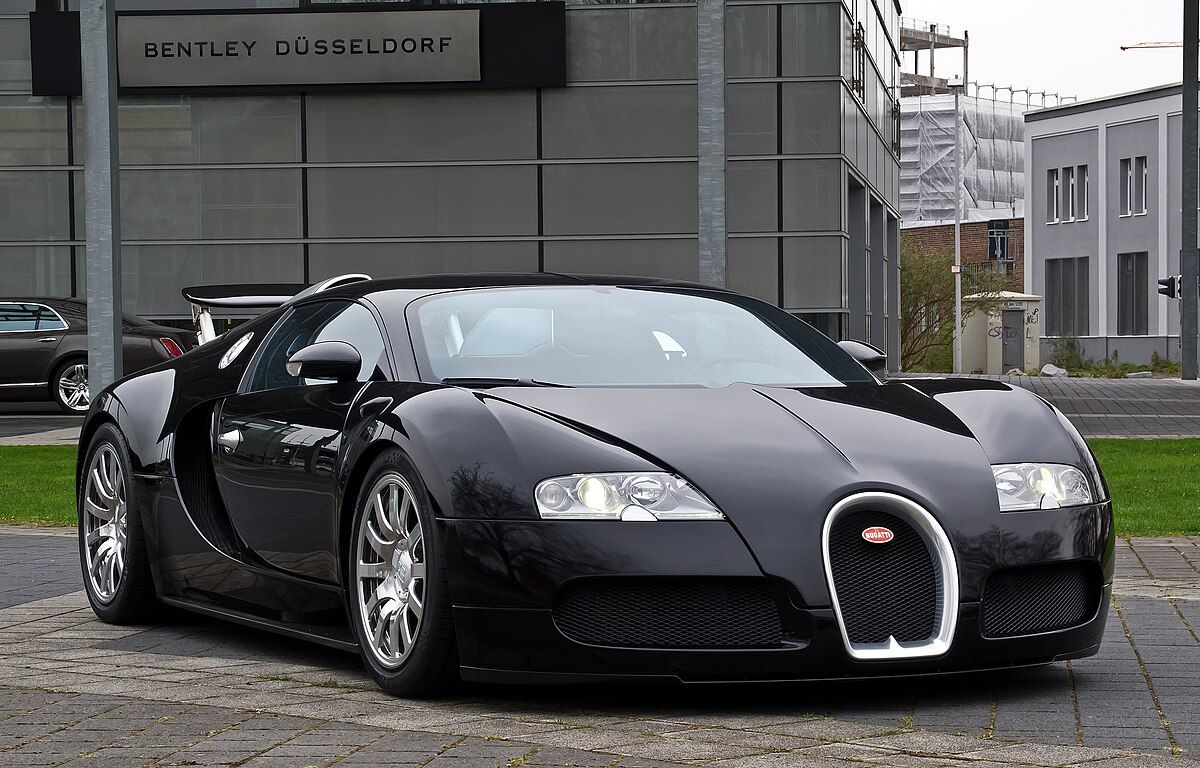
2. **Bugatti Veyron**
The Bugatti Veyron stands as a monument to automotive engineering, specifically crafted for achieving record-breaking speeds and delivering an extraordinary driving experience. At the heart of this hypercar lies an 8.0-liter W16 quad-turbocharged engine, a powertrain of immense complexity and power. However, such an awe-inspiring level of performance and mechanical sophistication comes with a considerable cost, particularly evident in its fuel efficiency, which is rated at a mere 8 MPG in city driving conditions. This figure unequivocally places the Veyron at the very bottom of the fuel economy spectrum.
Much like other high-performance sports cars, the Bugatti Veyron’s design is a clear manifestation of a performance-first philosophy, where concerns about fuel efficiency are secondary to the pursuit of speed and power. The sheer size and power output of its W16 engine necessitate a vast amount of fuel to propel the vehicle, especially when pushing its limits. This contributes to it being among the least fuel-efficient cars on the market, illustrating how raw power directly translates into high fuel consumption. The comparison to a Toyota Prius, which burns about five times less gas for any given trip, starkly highlights the Veyron’s position as an extreme gas guzzler.
The significant fuel demands of the Veyron mean that owners face substantial direct fuel costs, consuming far more fuel for the same distance compared to more efficient vehicles. This also implies increased greenhouse gas emissions, a point of concern for environmental impact. For the exclusive group of individuals who own such a vehicle, the astronomical fuel bill is simply part of the package, a necessary expense for owning a piece of automotive history built without significant regard for efficiency.
Car Model Information: 2012 Bugatti Veyron 16.4 Super Sport
Name: Bugatti Veyron 16.4
Manufacturer: Bugatti Automobiles
Production: unbulleted list
Predecessor: Bugatti EB 110
Designer: Jozef Kabaň
Class: Sports car
BodyStyle: unbulleted list
Related: unbulleted list
Layout: mid-engine, four-wheel-drive layout
Powerout: unbulleted list
Wheelbase: 2710 mm
Abbr: on
Length: 4462 mm
Width: 1998 mm
Height: 1204 mm
Weight: convert
Sp: uk
Successor: Bugatti Chiron
Categories: 2010s cars, All articles containing potentially dated statements, Articles containing potentially dated statements from August 2014, Articles with hAudio microformats, Articles with short description
Get more information about: Bugatti Veyron
Buying a high-performing used car >>>
Brand: Bugatti Model: Veyron
Price: Not Priced Mileage: 5,081 mi.

3. **Ford F-250 Super Duty (V8)**
Steering away from exotic supercars, we encounter the Ford F-250 Super Duty with its V8 engine, a vehicle designed for an entirely different purpose: heavy-duty work. This robust truck is built specifically to tow and haul massive loads, tasks that inherently demand significant power and, consequently, substantial fuel consumption. The F-250’s 6.7-liter Power Stroke V8 engine is a true workhorse, engineered for immense capability rather than frugality. Its EPA-estimated 10 MPG city rating is a clear indication that this truck is a gas guzzler, particularly challenging for those who frequently operate it in urban or stop-and-go environments.
The primary factors contributing to the F-250 Super Duty’s poor fuel economy are its formidable engine type and its heavy weight. Large trucks like the F-250 are, by nature, designed to be heavy and strong to accommodate their payload and towing capacities. This substantial weight requires more energy to get the vehicle moving and to maintain speed, especially under load. The powerful 6.7-liter V8 engine, while crucial for its work-related functions, consumes a large volume of gasoline to generate the necessary power, exemplifying why large trucks and SUVs are often classified as low MPG vehicles.
For owners, the impact of this poor fuel economy is felt directly through elevated fuel costs. Operating a vehicle that uses more fuel for every mile traveled means frequent and expensive trips to the gas station, particularly for commercial users or those who depend on their truck for daily heavy-duty tasks. The F-250 is an essential tool for many, but its design necessitates a trade-off between uncompromising capability and fuel efficiency, resulting in a higher financial burden for its operators.
Car Model Information: 2022 Hyundai SANTA FE SEL 2.4
Name: Ford Super Duty (F-250/F-350/F-450/F-550/F-600)
Caption: 2020 Ford F-250
Manufacturer: Ford Motor Company
Production: January 5, 1998–present
ModelYears: 1999–present
Class: pickup truck
Layout: Front-engine, rear-wheel-drive layout
Predecessor: Ford F-Series (ninth generation)
Categories: 2000s cars, 2010s cars, All-wheel-drive vehicles, All articles with bare URLs for citations, Articles with bare URLs for citations from August 2024
Get more information about: Ford Super Duty
Buying a high-performing used car >>>
Brand: Ford Model: F-250 Super Duty
Price: $24,900 Mileage: 28,615 mi.

4. **Chevrolet Suburban 2500 (V8)**
The Chevrolet Suburban 2500, a quintessential full-size SUV, is widely recognized for its considerable size, exceptional utility, and generous passenger and cargo space. Powered by a 6.0-liter V8 engine, this vehicle, much like heavy-duty trucks, prioritizes towing capacity and interior volume over fuel efficiency. The 10 MPG city rating it receives serves as a direct reflection of the operational cost associated with such a large, capable, and weighty vehicle. It embodies the characteristics of large SUVs that, due to their inherent design, fall into the category of gas-guzzling cars.
The combination of the Suburban 2500’s heavy weight and its large V8 engine are the principal culprits behind its poor fuel economy. As a large SUV, it demands more energy to accelerate and maintain momentum compared to lighter, smaller vehicles. The robust 6.0-liter V8, while providing ample power for hauling families and gear, consumes a significant amount of fuel in the process. This is further compounded by the type of driving often associated with such vehicles; while highway driving can be more efficient, city driving with its frequent stops and starts necessitates more power and, therefore, more gas.
The financial implications for owners of a Chevrolet Suburban 2500 are significant, predominantly in the form of elevated fuel expenses. With increasing gas prices, the cost of filling up such a large tank adds up quickly, impacting household budgets or operational costs for businesses. Furthermore, the constant demand on components like the engine and transmission, working harder than usual, can potentially lead to overwhelming maintenance costs and a reduced lifespan if not properly cared for. The Suburban 2500 is a highly practical vehicle for specific needs, but its utility comes hand-in-hand with substantial fuel consumption.
Car Model Information: 2022 Hyundai SANTA FE SEL 2.4
Layout: Front-engine, rear-wheel-drive layout,rear-wheel drive
Related: ubl
Categories: 1940s cars, 1950s cars, 1960s cars, 1970s cars, 1980s cars
Get more information about: Chevrolet Suburban
Buying a high-performing used car >>>
Brand: Chevrolet Model: Suburban 2500
Price: $24,900 Mileage: 28,615 mi.
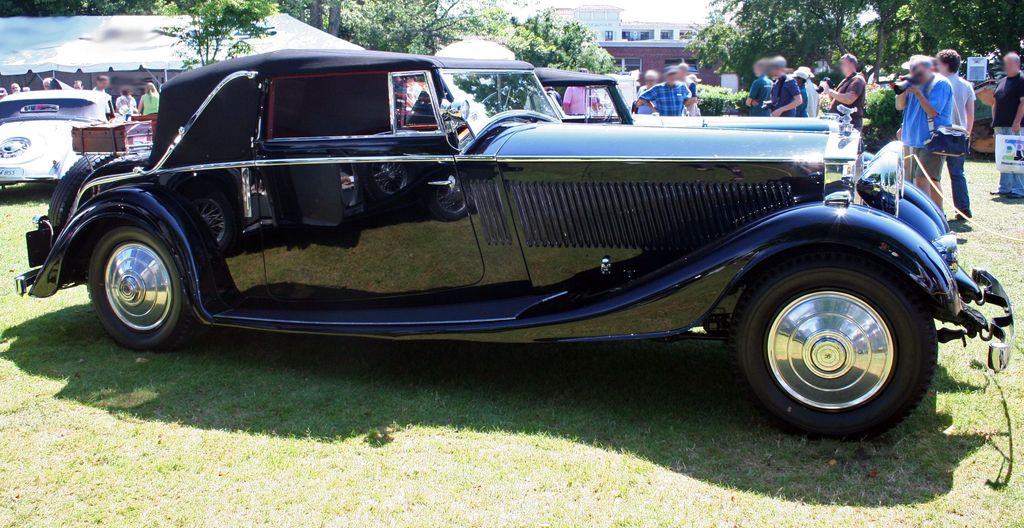
5. **Rolls-Royce Phantom**
The Rolls-Royce Phantom stands as the ultimate expression of automotive luxury and refinement. However, beneath its opulent exterior and whisper-quiet ride lies a powerful 6.75-liter V12 engine that, while delivering smooth and effortless propulsion, also comes with a significant fuel bill. Despite being engineered for a refined and serene experience, this ultra-luxurious car achieves only 12 MPG in city driving. This figure clearly demonstrates that in the realm of such high-end vehicles, luxury and sheer power are the paramount considerations, often with fuel efficiency being a distant secondary concern.
The primary drivers of the Phantom’s less-than-stellar fuel economy are its exceptionally large V12 engine and its substantial curb weight. Vehicles of this caliber are meticulously crafted with premium materials and extensive soundproofing, adding considerable mass. This heavyweight, combined with the power demands of a large engine designed for effortless acceleration and cruising, means the vehicle requires a lot of energy to move. The design ethos prioritizes supreme comfort, an uncompromised driving experience, and the prestige of a potent engine, making high fuel consumption an accepted characteristic.
For the owners of a Rolls-Royce Phantom, the financial impact of its fuel consumption, while perhaps less of a concern than for the average consumer, is still a tangible aspect of ownership. The consistent need for premium fuel and the frequency of refueling represent a considerable expense over time. This illustrates a common thread among luxury brands like Bentley and Rolls-Royce, which frequently appear at the lower end of fuel-economy rankings, where the pursuit of ultimate comfort and performance inherently leads to a higher demand for fuel.

6. **Hummer H1**
The Hummer H1, an icon born from military roots, represents the pinnacle of rugged durability and off-road capability. This formidable vehicle, equipped with a 6.5-liter turbodiesel V8 engine, is undeniably more at home traversing challenging off-road terrain than navigating crowded city streets. Its notorious reputation for guzzling gas is well-earned, with an estimated fuel efficiency of 10 MPG city and 14 MPG highway, alongside other ratings of 8 MPG city, 10 MPG highway, and 9 MPG combined. These figures firmly establish the H1 as one of the most fuel-inefficient vehicles ever produced.
The primary factors contributing to the Hummer H1’s poor fuel economy are its immense weight, the powerful 6.5-liter turbodiesel V8 engine, and its inherently un-aerodynamic, boxy design. Built to withstand extreme conditions, the H1 is constructed with heavy-duty components, resulting in a vehicle weighing over 6,000 pounds. Such a massive vehicle requires a tremendous amount of energy to propel, especially during acceleration and deceleration. Furthermore, its distinctive square shape, while functional for off-road ruggedness, presents significant air resistance, forcing the engine to work harder to maintain speed, particularly at higher velocities, thereby consuming more fuel.
The impact on H1 owners, though often less of a deterring factor for those seeking its unique capabilities, is undeniably financial. The substantial fuel costs, coupled with potential higher maintenance demands due to the vehicle’s robust and often overworked components, contribute to a considerable overall operating expense. The H1 is a specialized machine, designed for a very specific type of performance where fuel efficiency was never a priority, making it a stark example of a vehicle where capability dictates consumption.
Car Model Information: 2003 Hummer H1 Open Top
Name: Hummer H1
Manufacturer: AM General
Engine: Chevrolet_small-block_engine_(first-_and_second-generation)#L05,V8 engine
Transmission: Automatic transmission, GM 4L80-E transmission
Wheelbase: 130 in
Abbr: on
Length: 184.5 in
Width: 86.5 in
Height: 77 in
Caption: Hummer HMC Soft Top
Categories: 2000s cars, AM General vehicles, All-wheel-drive vehicles, Articles with short description, Cars introduced in 1992
Get more information about: Hummer H1
Buying a high-performing used car >>>
Brand: Hummer Model: H1
Price: $67,999 Mileage: 75,604 mi.

7. **Mercedes-Benz G-Class (G63 AMG)**
The Mercedes-Benz G-Class, particularly the high-performance G63 AMG variant, epitomizes a unique blend of luxury, off-road prowess, and raw power in a distinctly boxy package. This iconic SUV boasts a formidable twin-turbo 4.0-liter V8 engine, an engineering marvel capable of churning out massive power. However, this impressive output, combined with its characteristic rigid, aerodynamic-defying design and considerable weight, culminates in an abysmal city fuel economy rating of 13 MPG. It is unequivocally a vehicle where off-road performance and luxury are the driving forces behind its conception, with fuel economy remaining a clear afterthought.
The design choices that contribute to the G63 AMG’s poor fuel efficiency are multifaceted. Its substantial curb weight, a consequence of its robust construction and luxurious appointments, necessitates more energy to move. More critically, its distinctive, upright, and boxy silhouette, while instantly recognizable and favored for its utilitarian aesthetic and off-road clearance, is far from aerodynamic. This lack of aerodynamic efficiency means the vehicle faces increased air resistance, compelling the powerful V8 engine to work significantly harder, especially at speed, and thus consume more fuel. The G63 AMG is a prime example of how both engine size and vehicle aerodynamics play crucial roles in overall fuel consumption.
For those who invest in a G63 AMG, the financial reality of frequent and costly refueling is part and parcel of the ownership experience. The powerful engine, constantly contending with the vehicle’s weight and shape, translates directly into higher direct fuel costs. This is a recurring theme across many large SUVs with powerful engines; they offer performance and luxury, but at the expense of efficiency. The G63 AMG serves as a powerful reminder that while exhilarating to drive and supremely capable, certain design priorities inevitably lead to a vehicle that will consistently drain your wallet at the pump.
Continuing our exploration into vehicles that are notably inefficient at the pump, we shift our focus to an additional seven models that, for various reasons rooted in their design and performance aspirations, stand out as significant ‘fuel guzzlers.’ These vehicles further illustrate that whether driven by a pursuit of extreme power, ultimate luxury, or heavy-duty capability, the trade-off often manifests as substantially higher fuel consumption and operating costs for the consumer. Understanding these vehicles provides crucial insight for anyone looking to make an informed decision about their next automotive purchase, particularly in an era of fluctuating fuel prices and growing environmental awareness.
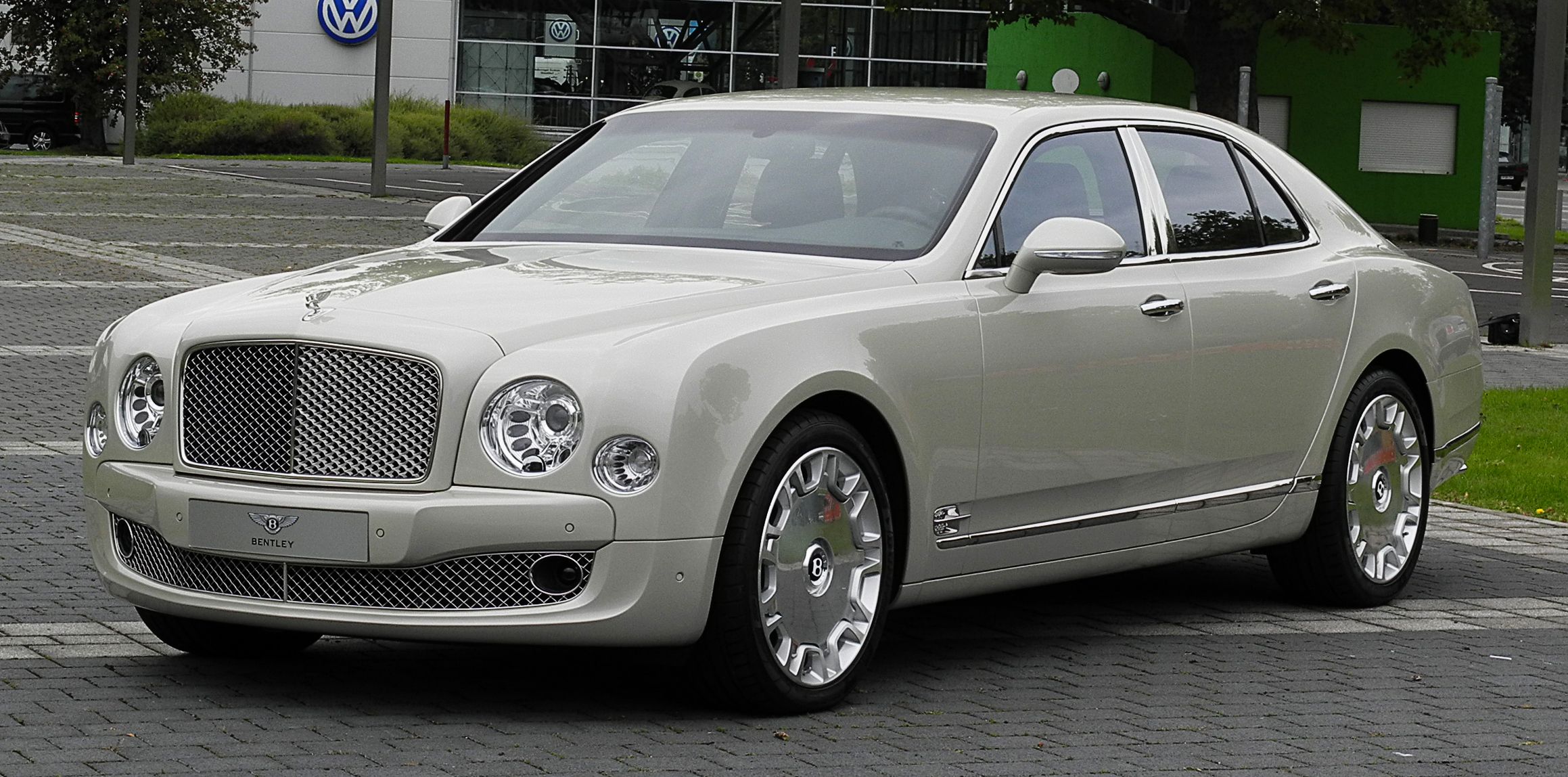
8. **Bentley Mulsanne**
The Bentley Mulsanne embodies ultra-luxury, prioritizing an opulent experience and serene cruising above all else. Powered by a 6.75-liter V8 engine, this vehicle is designed to deliver a smooth and commanding ride, reflecting Bentley’s unwavering focus on comfort and power. However, this pursuit of unparalleled luxury comes with a notable financial implication for its owners, as evidenced by its dismal 10 MPG city rating. The 2020 Bentley Mulsanne achieves a combined city/highway rating of 10/16 MPG, positioning it firmly among vehicles with poor fuel economy.
The substantial curb weight of the Mulsanne, a direct result of its premium materials and extensive soundproofing, combined with the demands of its powerful V8 engine, is a key factor in its fuel inefficiency. These characteristics necessitate more energy to propel the vehicle, especially in stop-and-go city driving. For owners, the impact is a consistent and considerable expenditure on premium fuel, a tangible aspect of owning a vehicle where efficiency takes a back seat to a truly luxurious driving experience.
This highlights a common trend among high-end luxury brands like Bentley, where the ultimate in comfort and performance inherently leads to a higher demand for fuel. For those who acquire such a vehicle, the significant fuel bill is simply an accepted part of the ownership package, an exchange for the prestige and exquisite refinement that the Mulsanne offers. It serves as a reminder that certain design priorities inevitably lead to a vehicle that will consistently drain your wallet at the pump.
Car Model Information: 2016 Bentley Mulsanne Base
Name: Bentley Mulsanne
Manufacturer: Bentley Motors
Production: March 2010 – June 2020
ModelYears: 2011–2020
Assembly: Crewe
Designer: Dirk van Braeckel
Class: Full-size, luxury car
BodyStyle: Sedan (automobile)
Layout: Front-engine, rear-wheel-drive layout
Engine: twin-turbocharged, Rolls-Royce–Bentley L-series V8 engine
Transmission: ZF 8HP
Wheelbase: 3266 mm
Abbr: on (EWB)
Length: 5575 mm
Width: Convert
Height: 1521 mm
Weight: cvt, convert
Predecessor: Bentley Arnage
Sp: uk
Categories: Articles with short description, Bentley vehicles, CS1 errors: bare URL, CS1 errors: missing title, Cars discontinued in 2020
Get more information about: Bentley Mulsanne (2010)
Buying a high-performing used car >>>
Brand: Bentley Model: Mulsanne
Price: $95,000 Mileage: 28,725 mi.
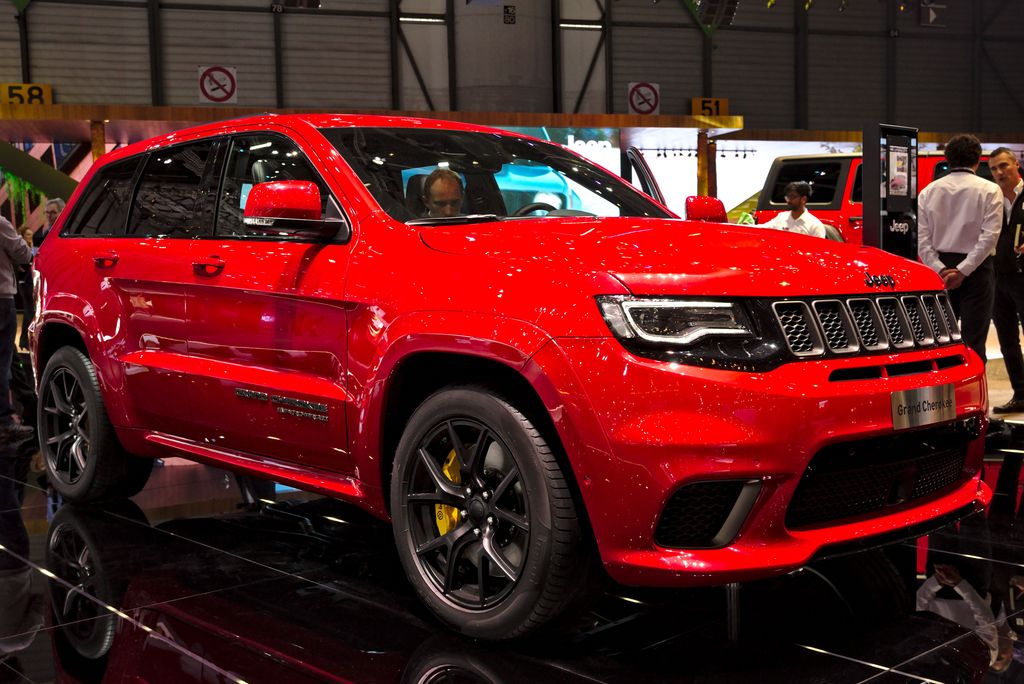
9. **Jeep Grand Cherokee Trackhawk**
The Jeep Grand Cherokee Trackhawk is an undeniable marvel of engineering, delivering mind-blowing speed and performance within the practical confines of a mid-size SUV form factor. Beneath its hood lies a supercharged 6.2-liter V8 engine, churning out an astonishing 707 horsepower, making it a surprisingly balanced yet incredibly fun vehicle to drive. However, this immense power and exhilarating performance come at a significant cost in terms of fuel efficiency, with its EPA-estimated city rating of just 11 MPG. The Trackhawk’s combined rating stands at 13 MPG.
The primary reason for the Trackhawk’s poor fuel economy is its high-performance supercharged V8 engine, specifically designed for raw acceleration and speed. Vehicles with such powerful engines inherently consume more gasoline than those with smaller, more efficient powerplants, particularly when that power is frequently unleashed. The substantial horsepower on tap requires a vast amount of fuel to operate, translating directly into high fuel consumption during daily driving.
For owners, the enjoyment of 707 horsepower means frequent and costly trips to the gas station. This situation exemplifies how the appeal of extreme performance in an SUV package directly leads to a higher financial burden through elevated fuel expenses. While offering an incredibly engaging driving experience, the Grand Cherokee Trackhawk unequivocally demonstrates that prioritizing raw power in a vehicle design results in it being one of the least fuel-efficient options available.
Car Model Information: 2022 Hyundai SANTA FE SEL 2.4
Name: Fourth-generation Jeep Grand Cherokee (WK2)
Production: May 2010–2022
Aka: Jeep Grand Cherokee WK (2022)
ModelYears: 2011–2022
Manufacturer: Jeep
Class: Mid-size SUV
Designer: Mark Allen
Engine: ubl
Assembly: ubl
Transmission: 5G-Tronic
Layout: Front-engine, rear-wheel-drive
Wheelbase: 2915 mm
Abbr: on (V8 4WD)
Disp: flip
Length: 189.8 in
Width: 76.3 in
Height: 69.3 in
Weight: 4533 lb
Related: Dodge Durango#WD
Predecessor: Jeep Grand Cherokee (WK)
Successor: Jeep Grand Cherokee (WL)
Categories: 2010s cars, All-wheel-drive vehicles, All Wikipedia articles in need of updating, All articles that are excessively detailed, All articles with dead external links
Get more information about: Jeep Grand Cherokee (WK2)
Buying a high-performing used car >>>
Brand: Jeep Model: Grand Cherokee Trackhawk
Price: $24,900 Mileage: 28,615 mi.
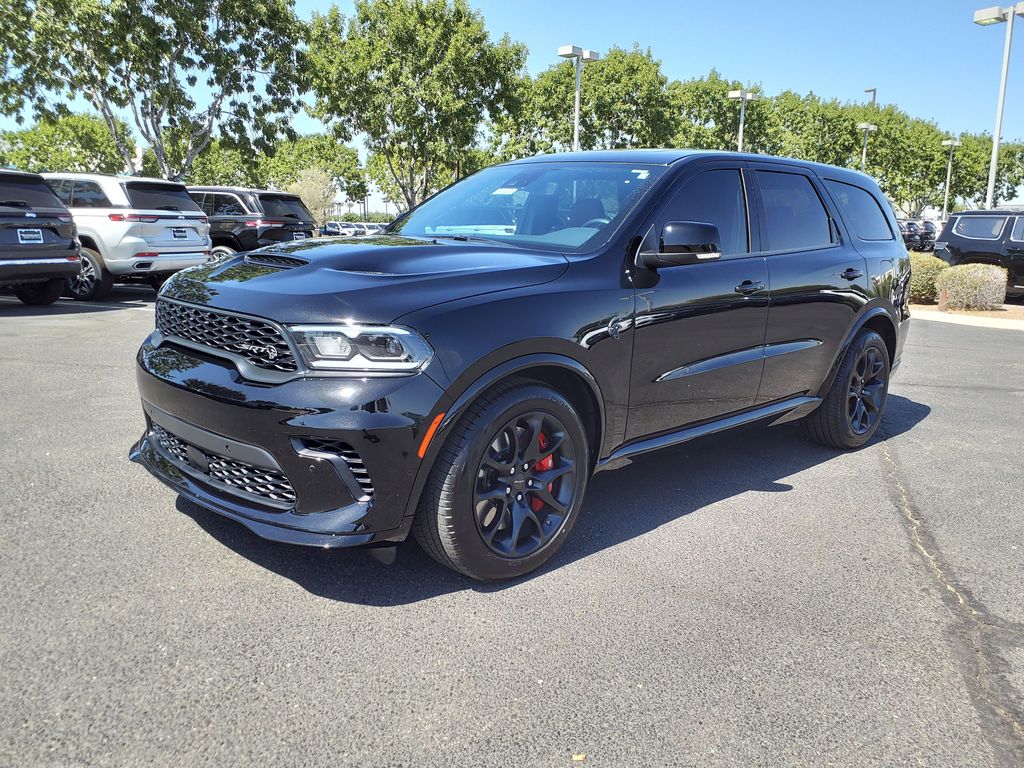
10. **Dodge Durango SRT Hellcat**
The Dodge Durango SRT Hellcat skillfully merges family-friendly practicality with the visceral thrill of a supercharged muscle car, creating an SUV that is both capable and exhilarating. This formidable SUV runs a 710-horsepower supercharged 6.2-liter V8 engine, a powertrain designed to deliver immense power and speed. However, this potent combination inevitably results in a gas-guzzling 12 MPG city rating, making it a vehicle not built for fuel-conscious drivers.
The substantial 710 horsepower and the supercharged nature of its 6.2-liter V8 engine are the leading contributors to the Durango SRT Hellcat’s poor fuel economy. Such an engine demands a significant volume of fuel to generate its power, especially under typical driving conditions that may include spirited acceleration. The vehicle’s full-size SUV dimensions and curb weight further amplify its fuel consumption, requiring more energy to move than lighter, smaller vehicles.
For owners, the immense power and fun-to-drive nature of the Hellcat come with the financial reality of frequent refueling and elevated fuel costs. This represents a clear opportunity cost, where money spent on excessive gas could be allocated to other beneficial uses. The Durango SRT Hellcat serves as a prime example of how integrating extreme performance into a mass-market utility vehicle leads to substantial fuel demands, making it a significant drain on the wallet at the pump.
Car Model Information: 2015 Dodge Durango SXT
Name: Dodge Durango
Manufacturer: Dodge
Production: 1997–present
Class: Mid-size, SUV
Predecessor: Dodge Ramcharger, Dodge Town Panel and Town Wagon
Related: Dodge Dakota
Layout: Front-engine, rear-wheel-drive layout, automobile layout
Caption: Dodge Durango GT 2021
ModelYears: 1998–2009, 2011–present
Categories: 2000s cars, 2010s cars, 2020s cars, All-wheel-drive vehicles, All accuracy disputes
Get more information about: Dodge Durango
Buying a high-performing used car >>>
Brand: Dodge Model: Durango
Price: $13,855 Mileage: 126,391 mi.
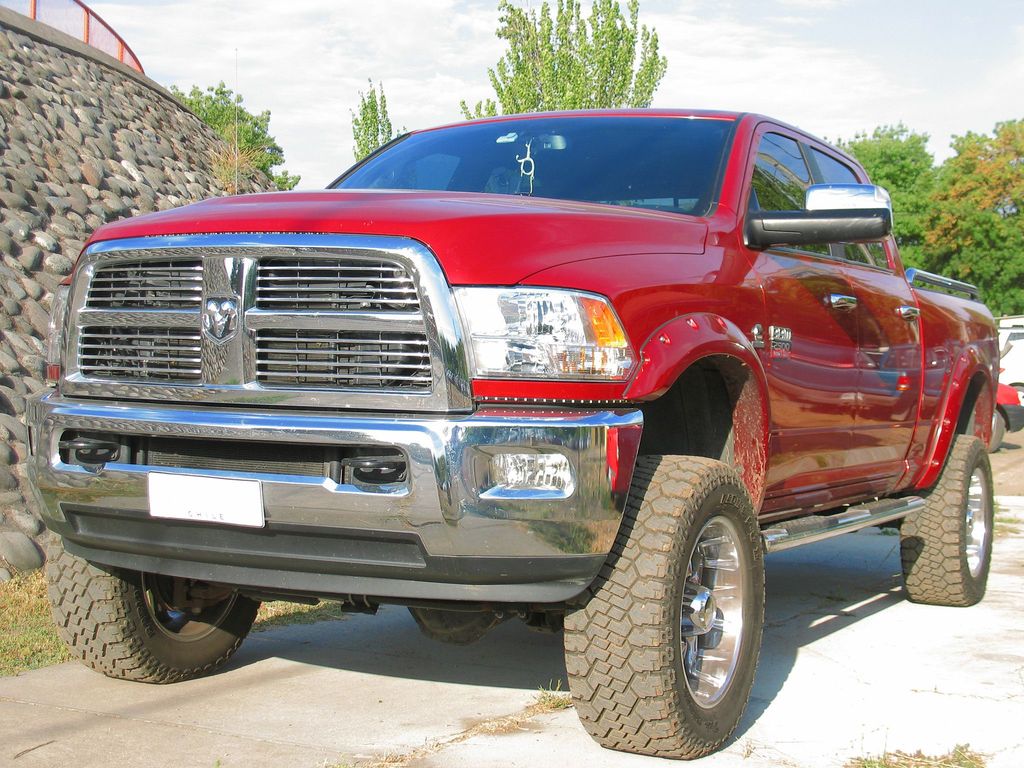
11. **Dodge Ram 2500 (V8)**
The Dodge Ram 2500, particularly with its V8 engine, is unequivocally built for heavy-duty work, prioritizing towing, hauling, and rugged capability. Its 6.4-liter V8 engine is engineered to deliver robust power, making it an indispensable tool for many commercial and private users who require uncompromising strength. However, this inherent design for demanding tasks comes at a notable cost to fuel efficiency, reflected in its city rating of 12 MPG. This truck is designed for work, not for saving fuel.
The primary factors contributing to the Ram 2500’s poor fuel economy are its large engine type and considerable weight. As a heavy-duty truck, it is constructed with strong, durable components, resulting in a substantial curb weight. This mass, combined with the power demands of its 6.4-liter V8 engine, means the vehicle requires a significant amount of energy to accelerate, maintain speed, and perform its designated towing and hauling duties.
For owners who rely on the Ram 2500 for daily heavy-duty tasks or commercial use, the financial impact of its fuel consumption is a significant operational expense. The constant demand on the engine, working harder than a passenger car engine, translates into higher direct fuel costs and potentially increased maintenance demands over time. The Ram 2500 embodies the reality that ultimate capability in a work truck necessitates a clear trade-off with fuel efficiency, resulting in a higher financial burden for its operators.
Car Model Information: 2022 Hyundai SANTA FE SEL 2.4
Name: Dodge Ram / Ram pickup
Caption: 2017 Ram 1500 Express
Manufacturer: Dodge
ModelYears: 1981–present
Production: October 1980 – present
Class: Pickup truck#Full-size pickup truck, Pickup truck#Heavy-duty pickup truck
Layout: Front-engine, rear-wheel-drive layout,rear-wheel drive
Predecessor: Dodge D series
Categories: 1990s cars, 2000s cars, 2010s cars, 2020s cars, All-wheel-drive vehicles
Get more information about: Ram pickup
Buying a high-performing used car >>>
Brand: Dodge Model: Ram 2500
Price: $24,900 Mileage: 28,615 mi.
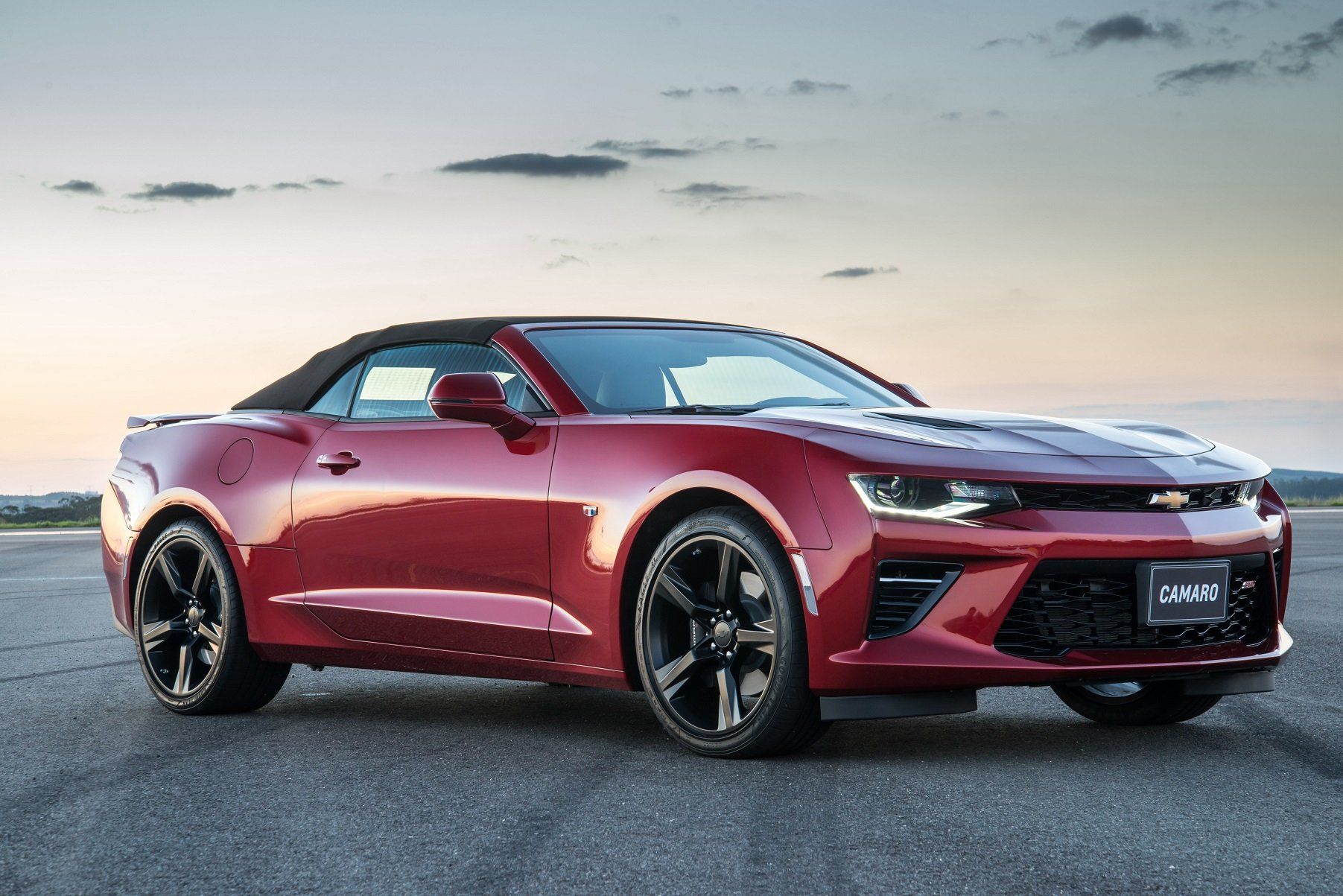
12. **Chevrolet Camaro ZL1 (Manual)**
The Chevrolet Camaro ZL1 is a quintessential American muscle car, engineered to deliver raw acceleration, blistering speed, and an undeniably thrilling driving experience. At its core is a supercharged 6.2-liter V8 engine, designed with a singular focus on maximum power output. The consequence of this performance-first philosophy is a stark 12 MPG city rating, firmly establishing the ZL1 as one of the least fuel-efficient sports cars available on the road.
The formidable supercharged 6.2-liter V8 engine, a hallmark of muscle car design, is the principal culprit behind the ZL1’s significant fuel consumption. Such large, powerful engines require a substantial amount of fuel to generate their impressive horsepower and torque, especially during the aggressive driving habits often associated with high-performance vehicles. This continuous demand for fuel positions the Camaro ZL1 at the lower end of the fuel economy spectrum.
For enthusiasts drawn to the Camaro ZL1’s unparalleled speed and driving dynamics, the financial reality includes frequent and expensive stops at the gas station. This consistent expenditure on fuel represents a tangible impact on the owner’s budget, an opportunity cost that is directly attributable to the vehicle’s design priorities. The ZL1 exemplifies how the pursuit of raw, unadulterated performance in a sports car inevitably leads to a vehicle that demands a significant commitment from your wallet at the pump.
Car Model Information: 2022 Hyundai SANTA FE SEL 2.4
Name: Chevrolet Camaro
Manufacturer: Chevrolet
Production: 1966–2002,2009–2023
ModelYears: 1967–2002,2010–2024
Class: Pony car
BodyStyle: coupe, convertible
Platform: GM F platform, GM Zeta platform, GM Alpha platform
Layout: Front-engine, rear-wheel-drive layout
Categories: 1970s cars, 1980s cars, 1990s cars, 2+2 coupés, 2000s cars
Get more information about: Chevrolet Camaro
Buying a high-performing used car >>>
Brand: Chevrolet Model: Camaro ZL1
Price: $24,900 Mileage: 28,615 mi.
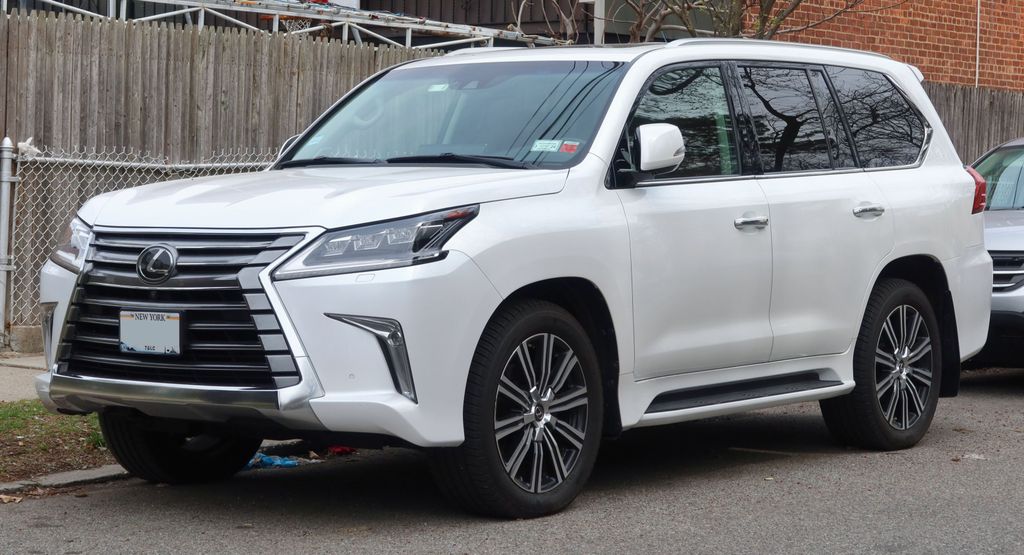
13. **Lexus LX 570**
The Lexus LX 570 stands as a testament to luxury and capability in the full-size SUV segment, offering unmatched luxury features and a robust presence. Despite its edgy, modern looks, it operates with an aging and inefficient 5.7-liter V8 engine that extracts just 383 horsepower from all that burned gasoline. This engine, shared with the Toyota Land Cruiser, contributes to its 12 MPG city rating, placing it among the less fuel-efficient luxury SUVs on the market, with a combined rating of 14 MPG.
The primary factors contributing to the LX 570’s poor fuel economy are its considerable weight and its older 5.7-liter V8 engine. As a large luxury SUV, it is built with extensive amenities and robust construction, adding significant mass. This heavyweight, combined with a V8 engine design that lacks the advanced fuel-saving technologies of newer powerplants, means the vehicle requires more energy to accelerate and maintain momentum, particularly in city driving conditions.
For owners, the promise of luxury and capability comes hand-in-hand with substantial fuel expenses. The reliance on an older engine design, which is less efficient in converting fuel into power, directly translates to higher direct fuel costs and increased greenhouse gas emissions. The Lexus LX 570 demonstrates that even within the luxury segment, older engine technology in a heavy vehicle can lead to a considerable financial and environmental impact for the consumer.
Car Model Information: 2022 Hyundai SANTA FE SEL 2.4
Name: Lexus LX
Caption: 2018 Lexus LX 570 (URJ201, US)
Manufacturer: Toyota
Aka: Toyota Land Cruiser
Production: November 1995 – present
Assembly: Toyota City, Aichi
Class: Full-size, luxury SUV
BodyStyle: SUV
Layout: Front-engine, four-wheel-drive
ModelYears: 1996–present
Categories: 2000s cars, 2010s cars, 2020s cars, All-wheel-drive vehicles, All articles with unsourced statements
Get more information about: Lexus LX
Buying a high-performing used car >>>
Brand: Lexus Model: LX 570
Price: $24,900 Mileage: 28,615 mi.

14. **Nissan Armada**
The Nissan Armada is a full-size SUV renowned for its solid power and spacious utility, designed to accommodate families and their gear with ease. Powering this burly SUV is a 5.6-liter V8 engine, which, while providing ample capability, contributes significantly to its less-than-stellar fuel economy. With a city rating of 13 MPG (and a combined rating of 15 MPG for the 4WD model), the Armada firmly ranks as one of the least efficient SUVs in its class.
The main contributors to the Nissan Armada’s poor fuel economy are its full-size body, substantial curb weight, and its reliance on an older V8 engine design. Similar to other large vehicles on this list, its considerable mass demands more energy to move and accelerate. The 5.6-liter V8, described as an ‘aging V-8 design,’ operates without the benefit of more modern fuel-saving technologies found in newer vehicles, leading it to ‘drink an old-school share of gasoline to no particularly impressive effect.’
For Armada owners, the robust utility and spacious interior come with the practical consequence of frequent and expensive visits to the fuel pump. The financial implications are clear: a vehicle that consistently consumes more fuel for every mile traveled will incur higher direct fuel costs. This makes the Nissan Armada a vehicle where practicality in size and power is achieved at the expense of fuel efficiency, affecting the owner’s wallet and the environment.
Car Model Information: 2011 Nissan Armada SV
Caption: 2023 Nissan Armada
Manufacturer: Nissan
Aka: Nissan Patrol
Production: 2003–present
ModelYears: 2004–present
Class: Full-size, sport utility vehicle
BodyStyle: SUV
Layout: Front-engine, rear-wheel-drive layout
Categories: 2010s cars, 2020s cars, All-wheel-drive vehicles, All Wikipedia articles written in American English, All articles with unsourced statements
Get more information about: Nissan Armada
Buying a high-performing used car >>>
Brand: Nissan Model: Armada
Price: $8,985 Mileage: 149,775 mi.
As we conclude this comprehensive look at some of the most prominent ‘fuel guzzlers’ on the market, it becomes clear that superior performance, opulent luxury, or heavy-duty capability often come with a substantial trade-off in fuel efficiency. While these vehicles offer distinct advantages tailored to specific consumer needs—be it the thrill of speed, the prestige of luxury, or the capacity for demanding work—they consistently demand a higher investment at the fuel pump. For consumers, a thorough understanding of these dynamics is essential for making fiscally responsible and environmentally conscious decisions in their vehicle choices.



